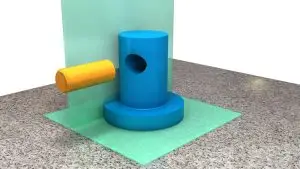Course Description
Engineering Drawings for Machining introduces the fundamental components and terminology used in reading engineering drawings used for machining processes. Presented in THORS’ highly visual and interactive learning format with many examples, this course assists employees in understanding and interpreting the information communicated on engineering drawings for machining.
Who will benefit from this Engineering Drawings for Machining course?
Engineering, manufacturing, quality, and purchasing personnel within any organization that produces parts using an engineering drawing.
Course Classification

*THORS uses the Bloom’s Taxonomy Methodology for our course development.
Certificate Awarded for Engineering Drawings for Machining

*upon successful completion
Related Posts

5 GD&T Benefits Over Traditional Measurements
According to mechanical engineers, there is no such thing as a ‘perfectly engineered part’. Every engineered part carries some degree of error. Hence, ensuring the

Understanding Welding Symbols and Drawings for Successful Projects
Understanding welding symbols and drawings is crucial in achieving high-quality and safe welds, contributing to the overall success of any type of welding project across

Developing Soft Skills in the Tech Industry
Soft skills in the tech industry, where precision and expertise are paramount, might seem secondary. However, soft skills such as communication, teamwork, and problem-solving, play





